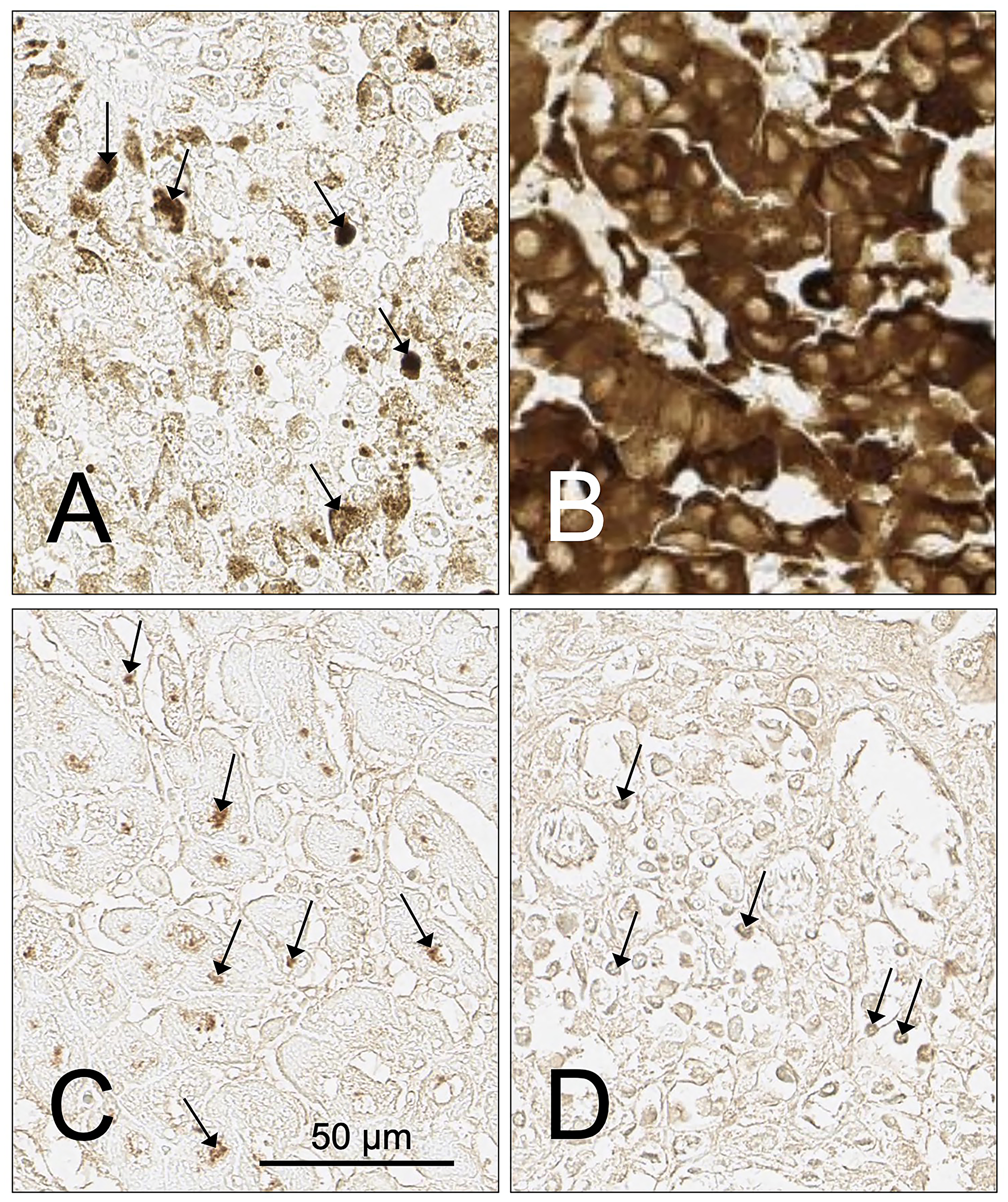Oncotarget Volume 11, Issue 35 published "Therapeutic applications of the selective high affinity ligand drug SH7139 extend beyond non-Hodgkin's lymphoma to many other types of solid cancers" by Balhorn et, al. which reported that SH7139, the first of a series of selective high affinity ligand oncology drug candidates designed to target and bind to the HLA-DR proteins overexpressed by B-cell lymphomas, has demonstrated exceptional efficacy in the treatment of Burkitt lymphoma xenografts in mice and a safety profile that may prove to be unprecedented for an oncology drug.
The aim of this study was to determine how frequently the HLA-DRs targeted by SH7139 are expressed by different subtypes of non-Hodgkin's lymphoma and by other solid cancers that have been reported to express HLA-DR. Binding studies conducted with SH7129, a biotinylated analog of SH7139, reveal that more than half of the biopsy sections obtained from patients with different types of non-Hodgkin's lymphoma express the HLA-DRs targeted by SH7139. Similar analyses of tumor biopsy tissue obtained from patients diagnosed with eighteen other solid cancers show the majority of these tumors also express the HLA-DRs targeted by SH7139. Cervical, ovarian, colorectal and prostate cancers expressed the most HLA-DR. Only a few esophageal and head and neck tumors bound the diagnostic.
Within an individual's tumor, cell to cell differences in HLA-DR target expression varied by only 2 to 3-fold while the expression levels in tumors obtained from different patients varied as much as 10 to 100-fold.
The high frequency with which SH7129 was observed to bind to these cancers suggests that many patients diagnosed with B-cell lymphomas, myelomas, and other non-hematological cancers should be considered potential candidates for new therapies such as SH7139 that target HLA-DR-expressing tumors.
Dr. Rod Balhorn from SHAL Technologies Inc. in Livermore, California said, "Many of the first targeted therapeutics for treating patients diagnosed with non-Hodgkin's lymphoma (NHL) were chimeric or humanized mouse monoclonal antibodies that recognized a member of the CD family of cell surface receptors."
In an effort to create small molecule targeting agents for use in cancer therapy that exhibit the same avidity and selectivity of antibodies but lack human antibody-mouse antibody responses and other antibody induced adverse effects, a series of selective high affinity ligands were developed to target the HLA-DR10 epitope recognized by Lym-1. This work led to the development of the family of tridentate SHALs, which include SH7139 and SH7129, that are the first of a new class of NHL small molecule drug and diagnostic candidates that target tumor cells expressing HLA-DR.
"The first of a new class of NHL small molecule drug and diagnostic candidates that target tumor cells expressing HLA-DR"
Although it is not entirely clear why tumors derived from tissues of non-lymphoid origin express HLA-DR, the predominant theory for which there is a great deal of experimental support suggests this expression can be initiated in response to tumor infiltration by lymphocytes, macrophages or dendritic cells and the release of cytokines during the inflammation that often accompanies tumor growth and the progression of the disease.
Analyses of tumors obtained from cervical cancer patients have also shown the tumor cells in biopsy tissues with higher IFN-γ concentrations exhibit higher levels of HLA-DR expression, and these patients survive longer and have a lower risk of disease recurrence.
The results show that each of the NHL subtypes tested, as well as 18 other types of solid cancer, express the HLA-DRs targeted by SH7139. A number of the non-hematological cancers express higher levels of HLA-DR and bind more SH7129 than the B-cell lymphomas and leukemias.
The SHAL Technologies Research Team concluded in their Oncotarget Research Paper that other factors, such as the presence of large numbers of tumor infiltrating lymphocytes, macrophages or dendritic cells that also express HLA-DR, could make it difficult to accurately quantify SH7129 binding by the tumor cells.

Figure 14: Examples of tumor cases with infiltrating lymphocytes or cells containing pigment that impact or prevent the assessment of SH7129 binding using DAB as a substrate. (A) Tissue sample ME481AB6, unstained moderately pigmented melanoma showing small pigment particles (arrows) similar in color to the insoluble product produced by SAHRP oxidation of DAB. (B) Tissue sample ME481AA8, unstained heavily pigmented melanoma section. (C) Tissue sample M672708, SLL/CLL tumor section showing SH7129 stained lymphocytes and macrophages (arrows). (D) Tissue sample BR807C3, breast medullary carcinoma section showing SH7129 stained infiltrating lymphocytes and macrophages (arrows). The images were captured at 40× magnification. The scale bar is the same for all images.
But if large numbers of these cells are present in the tissue, the extent of SH7129 binding to the tumor cells can only be determined in areas free of the antigen presenting cells.
Local variation in the optical properties of unstained cells and supporting or connective tissue also contribute background absorption and attenuation of the light transmitted through the tissue that adds to the signal provided by the oxidized product of the DAB substrate.
Tumor to tumor differences in density of cells packed within the section, disruptions in the integrity of the core or the presence of vacuoles, capillaries, or necrotic regions can change the amount of tumor tissue that is available to bind the diagnostic.
The use of sequentially cut cores for the stained and unstained control slides should help minimize these contributions to variability and reduce errors in the quantification of SH7129 binding to tumor cells.
Sign up for free Altmetric alerts about this article
DOI - https://doi.org/10.18632/oncotarget.27709
Full text - https://www.oncotarget.com/article/27709/text/
Correspondence to - Rod Balhorn - [email protected]
Keywords - HLA-DR, selective high affinity ligand, SH7139, SH7129, solid cancers
About Oncotarget
Oncotarget is a biweekly, peer-reviewed, open access biomedical journal covering research on all aspects of oncology.
To learn more about Oncotarget, please visit https://www.oncotarget.com or connect with:
SoundCloud - https://soundcloud.com/oncotarget
Facebook - https://www.facebook.com/Oncotarget/
Twitter - https://twitter.com/oncotarget
LinkedIn - https://www.linkedin.com/company/oncotarget
Pinterest - https://www.pinterest.com/oncotarget/
Reddit - https://www.reddit.com/user/Oncotarget/
Oncotarget is published by Impact Journals, LLC please visit http://www.ImpactJournals.com or connect with @ImpactJrnls
Media Contact
[email protected]
18009220957x105



